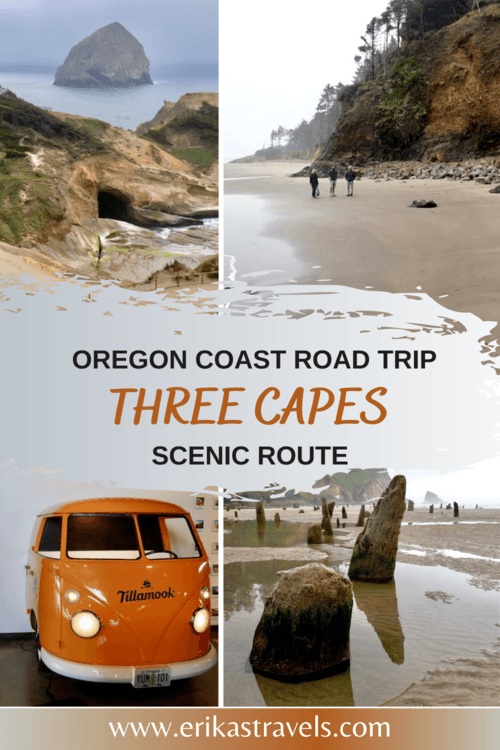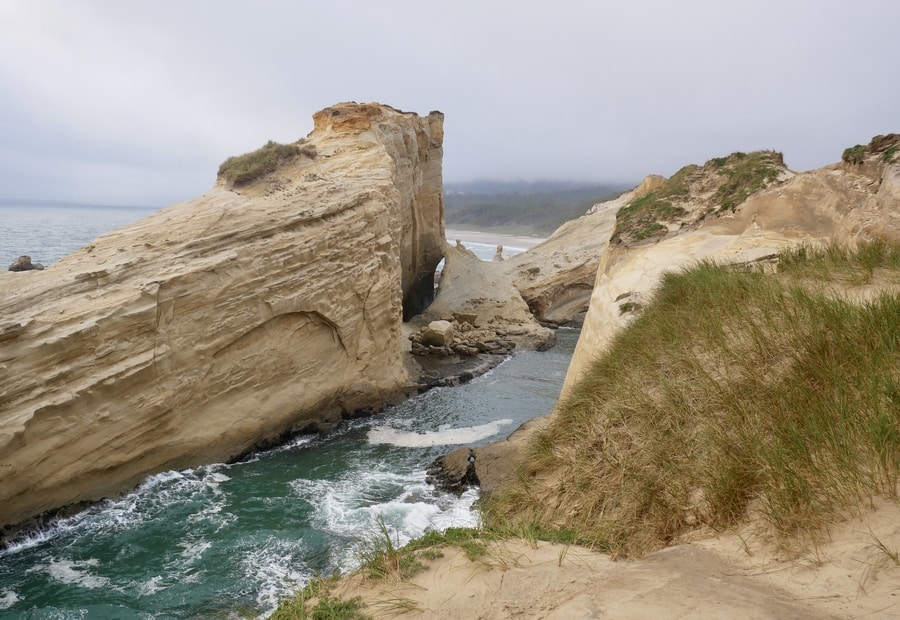
The Three Capes Scenic Loop in Oregon
Oregon’s Highway 101 is among the most unforgettable road trip destinations in North America. As it hugs the Pacific coastline, the route showcases soaring cliffs, windswept beaches, and charming seaside towns.
But between Tillamook and Lincoln City, the famous coastal road winds inland, away from the water’s edge. In doing so, it bypasses some of the Oregon Coast’s most awe-inspiring scenery.
The Three Capes Scenic Loop seeks to include the northern coast’s compelling off-highway attractions. A popular side tour from the US 101, it leads visitors to spectacular panoramic viewpoints, a historic lighthouse, dramatic beaches, and rainforest-covered capes.
THREE CAPES SCENIC DRIVE ON THE OREGON COAST
The Three Capes Scenic Drive stretches from Tillamook to Pacific City. As its name suggests, the loop features a popular threesome of capes that boast breathtaking views.
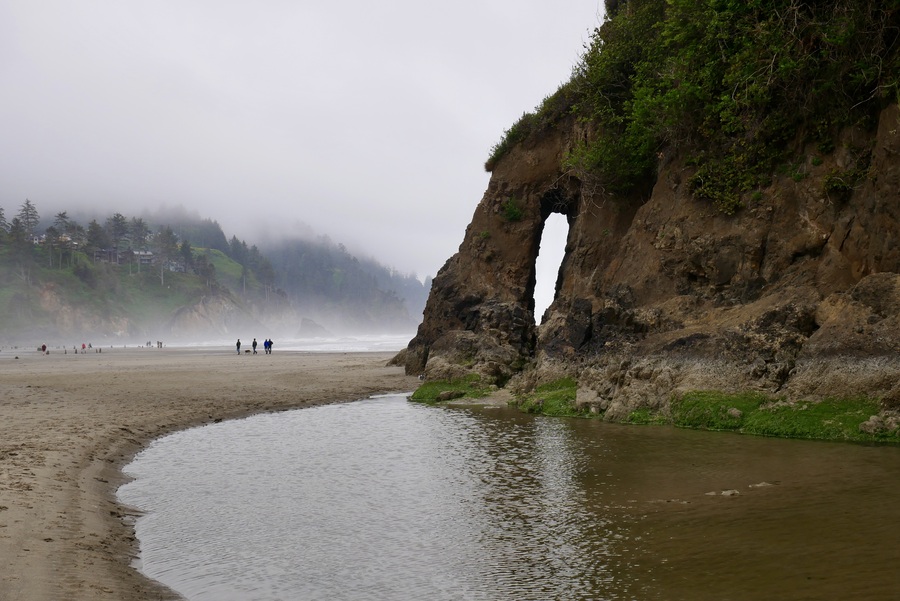
The three capes—Meares, Lookout and Kiwanda—lie along a winding 40-mile alternative to the US 101.
THE TILLAMOOK AGRICULTURAL AREA
Tillamook marks the starting point of the Three Capes Scenic Road. Located inland and a stone’s throw from the beach, the town is the heart of Oregon’s coastal dairylands. Pastoral Tillamook County’s dairies range from locally-touted to world-renowned.
During our tour of the Three Capes Scenic Loop, Dan and I stopped by both the Tillamook and Blue Heron creameries.
-
THE TILLAMOOK CHEESE FACTORY
The Tillamook Cheese Factory produces some of the most beloved cheddar cheese in the world. And its creamery, a popular tourist destination, has drawn fans since the mid-1900s.
In 2018, the creamery got a massive facelift that transformed it into a modern and airy museum-like attraction. The main level of the factory contains a gift shop, restaurant, and ice cream bar. Upstairs, placards and windows provide a (literal) glimpse into the cheese-making process.
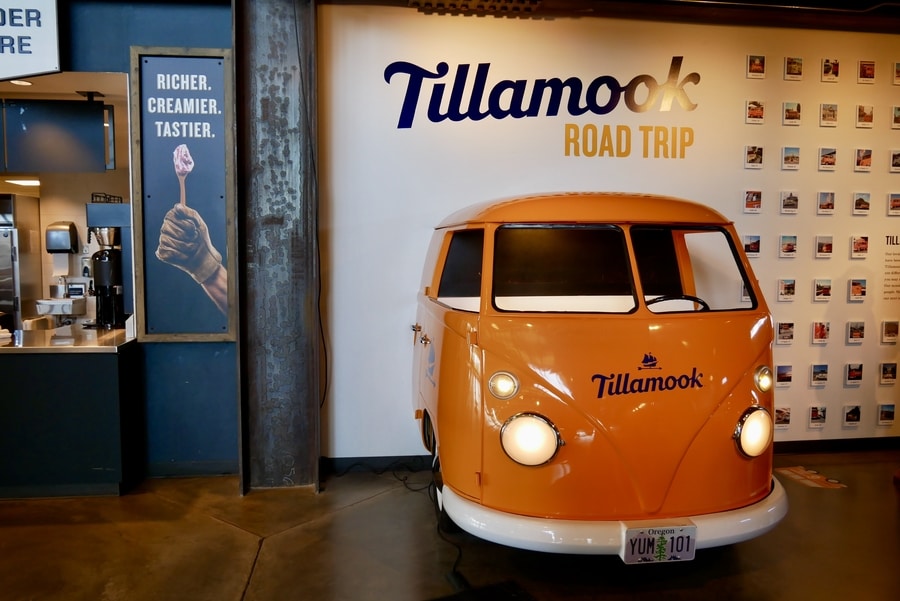
Be prepared for summer weekend crowds at the ice cream stand. When we visited, the line for ice cream was so long that it made me completely lose my desire for the frozen treat.
Those who do not wish to battle the crowds can find a limited selection of Tillamook ice cream at the nearby Blue Heron Creamery.
-
BLUE HERON CREAMERY
Blue Heron Creamery lies adjacent to the larger and more renowned Tillamook Factory. Its cheeses are fantastic and the creamery’s surroundings are well worth a small pit-stop. Its grounds contain a picturesque barn, vintage farm equipment, and a petting zoo.
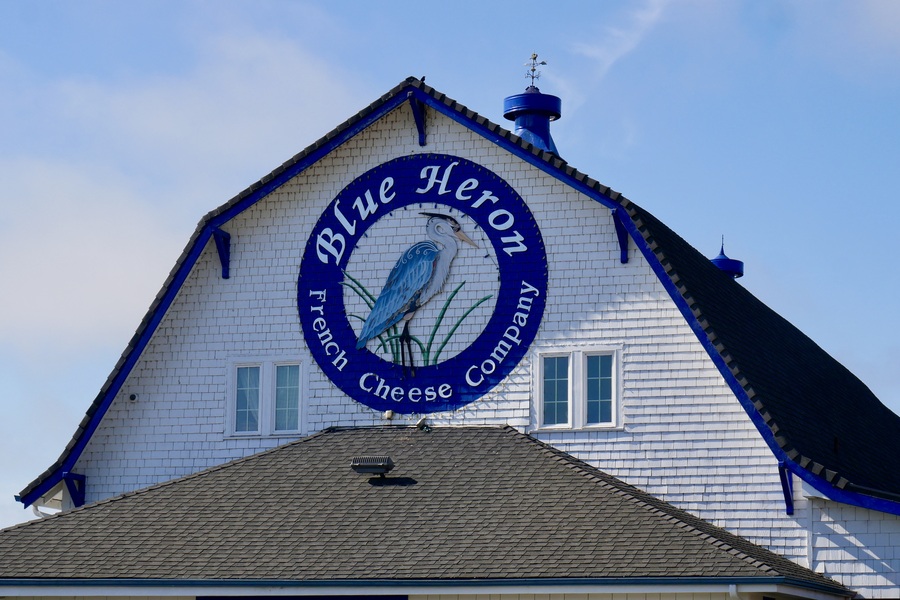
A selection of wines, gourmet gift baskets and specialty cheeses can be found in the gift shop.
CAPE MEARES STATE SCENIC VIEWPOINT
Located about ten miles west of Tillamook at the north end of the Three Capes Scenic Loop, Cape Meares is the perfect place to explore the Oregon Coast’s spruce forests and dramatic vistas. From April through July, the steep cliffs and offshore rocks are nesting sites for thousands of seabirds—including common murres and Brandt’s cormorants.
The cape’s two top attractions include the Octopus Tree and a miniature lighthouse.
-
CAPE MEARES LIGHTHOUSE
Cape Meares Lighthouse—the shortest beacon along the Oregon coast—stands a mere 38 ft high, atop a 200-ft bluff.
The lighthouse may be small, but it features an impressive kerosene-powered lens. First lit in 1890, its Fresnel lens was one of the most powerful and largest of its day. Mariners could spot the distinctive red-and-white flashes from more than 20 miles away.
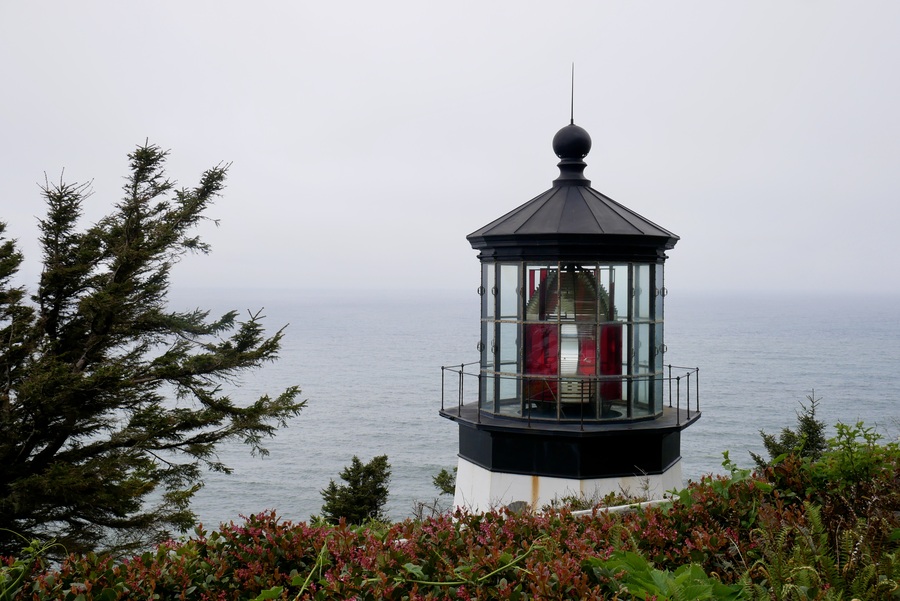
A paved 0.2-mile path leads from the main parking area to the lighthouse.
-
THE OCTOPUS TREE
From the parking area, a short 0.1 mile trail leads to the Octopus Tree—the Oregon Coast’s famous candelabra-shaped Sitka Spruce. The gargantuan tree is believed to be over 250 years old. Six branches grow upwards from the 50-foot wide trunk.
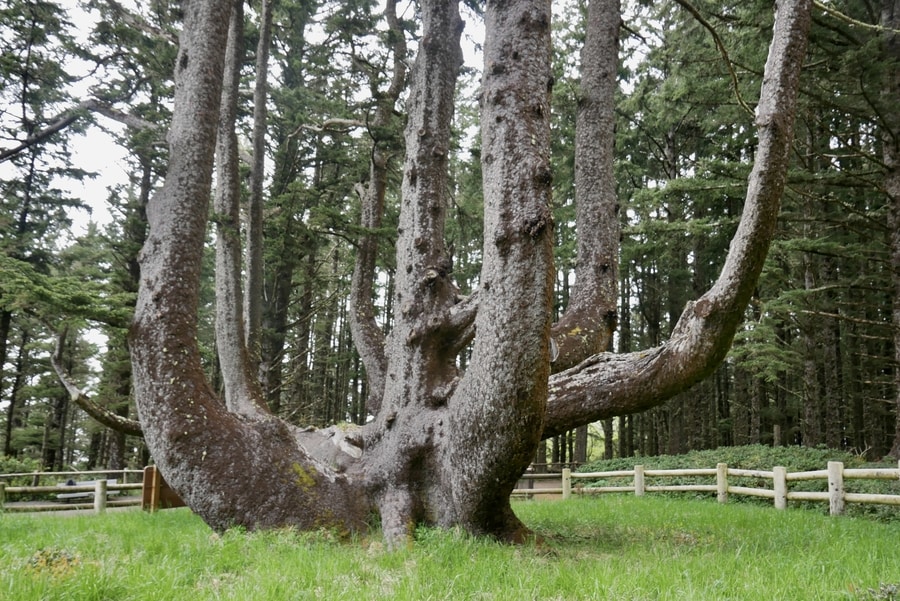
Some attribute the Sitka spruce’s shape to natural conditions such as extreme weather. Others, however, believe Native Americans trained the malleable branches to spread horizontally into a cage-like assortment of thick vertical trunks. Such ceremonial trees are common in the Pacific Northwest. Known as culturally modified trees, they are thought to have once held canoes and been central to ritualistic practices.
CAPE LOOKOUT
Cape Lookout State Park is a panoramic vista that sits high above the pounding Pacific surf. At the state park, there are over eight miles of hiking trails through lush old-growth forest. The park’s headlands jut two miles out into the ocean. A trail along the southern edge of the cape leads to viewpoints that extend in all directions.
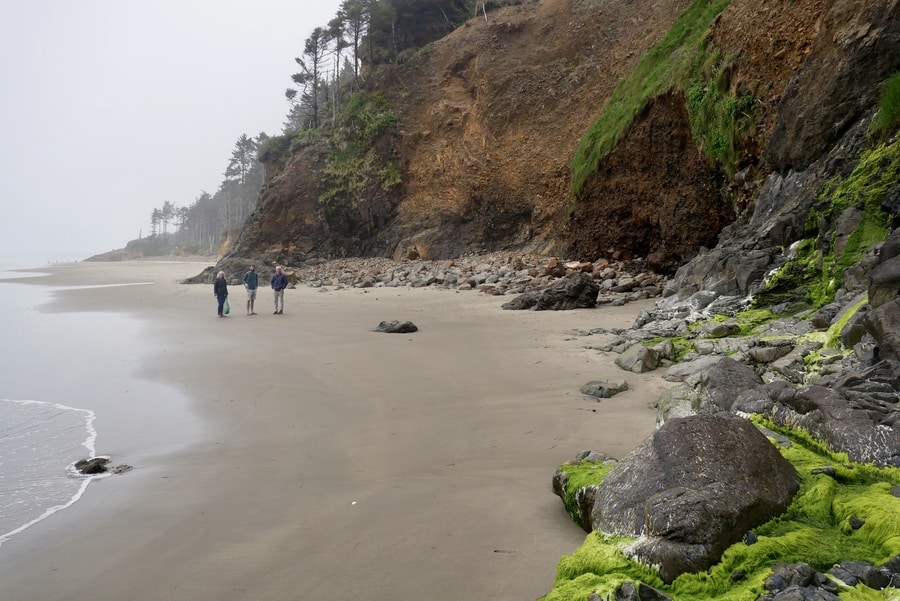
Unfortunately, during our visit to the Three Capes, storm damage precluded us from having access to the lookouts and trails.
Instead, we headed straight toward the state park’s beach and relished a stroll on the idyllic stretch of sand. The state park’s day use area offers nice picnic spots and terrific views.
Access requires an Oregon State Parks pass.
CAPE KIWANDA
Cape Kiwanda, the southernmost of the Three Capes, is among the scenic highlights of the northern Oregon coast. During summer months, it is popular with surfers, kayakers, kite flyers and beer-lovers who come for the conveniently-located Pelican Brewery.
The parking lot near Pelican Brewery charges $10/day for access to the area. While we were initially irked that we couldn’t use our Oregon State Parks Pass or our America the Beautiful Pass, our frustrations immediately subsided upon seeing the area.
Cape Kiwanda is simply one of the most spellbinding places in Oregon. It rivals Samuel H Boardman State Park, the central coast near Cape Perpetua, and Ecola State Park.
To skip it would be a shame.
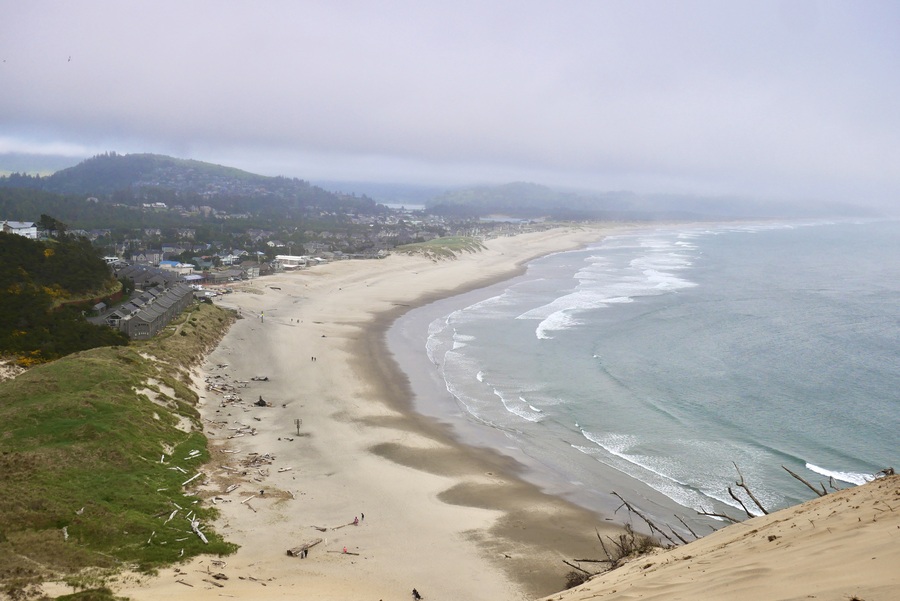
Cape Kiwanda’s main attraction is a gigantic dune that looms over the northern edge of Pacific City. Visitors can scale the dune for views of the coastline’s windswept beaches and rock formations.
From the top of the sand dune, spectacular views unfold in all directions. Cape Kiwanda’s Haystack Rock—not to be confused with the similarly-named sea stack at Cannon Beach—is the world’s fourth largest ocean monolith, rising 327 ft.
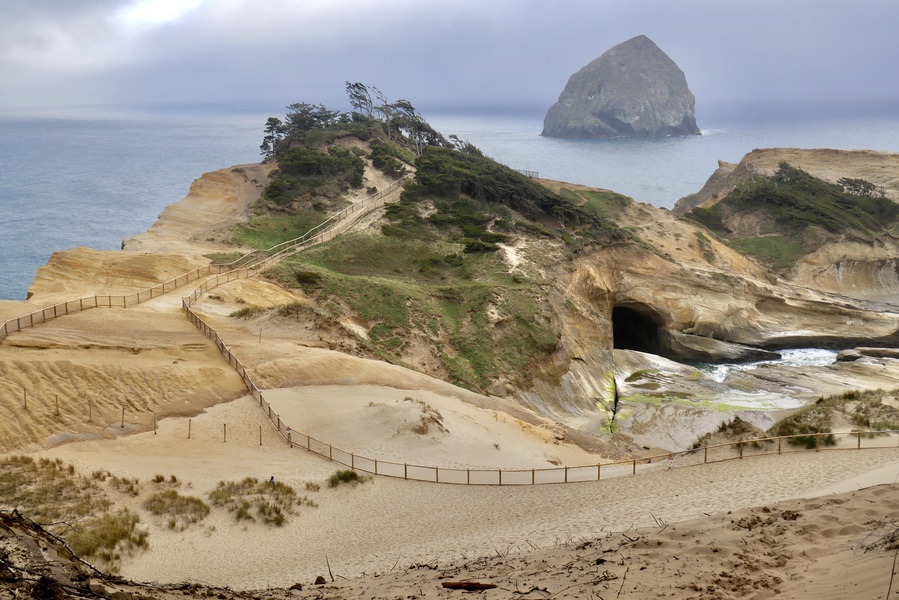
We climbed to the top of the sand dune and then made our way to the overlooks on the cape’s western edge. Following the fence’s boundaries, we photographed the numerous sea arches and rock monoliths that speckle the area.
THE NESKOWIN GHOST FOREST
Just south of the Three Capes Scenic Road, about 100 ancient decaying stumps stand sentinel on the windswept sand. Dubbed the Neskowin Ghost Forest, these crustacean-covered tree trunks are an eerie reminder of the Sitka spruce trees that towered over the area for two millennia.
For centuries, these old stumps were hidden under the beach. Then, in the winter of 1997, severe storms pummeled the coast. In doing so, they eroded the sands and exposed the uncanny forest that was buried beneath.
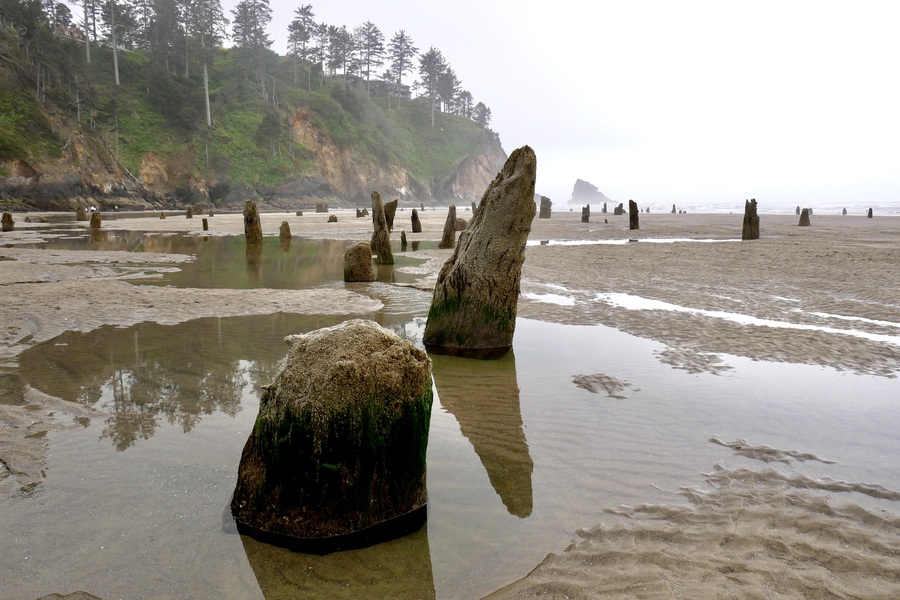
My family and I visited the Neskowin Ghost Forest as part of a day trip to the northern coast.
Though the forest isn’t part of the established Three Capes Scenic Loop, it would be a shame to miss if you are in the area during low tide.
WHERE TO STAY ON THE THREE CAPES LOOP
The Oregon Coast caters to a mix of accommodation types that range from rustic seaside motels to large resorts. The bulk of accommodations near the Three Capes Scenic Road can be found in Pacific City. Those willing to travel a little bit farther can find additional lodging in Lincoln City (23 miles away).
For travelers looking to camp, Cape Lookout State Park offers a mix of RV, tent and yurt camping. For those looking to relax in comfort, the Inn at Cape Kiwanda and Surf & Sand Inn receive stellar reviews.
****
Oregon’s Highway 101 is, without a doubt, among the most scenic driving routes in the United States. It showcases the best of the Pacific Coast’s state parks, wildlife refuges, and scenic vistas.
Yet, occasionally, the road travels inland, away from Oregon’s magnificent waterfront attractions.
In these instances, detouring from the US 101 reaps the greatest rewards.
Did You Enjoy This Guide to the Three Capes Scenic Road? PIN IT!
